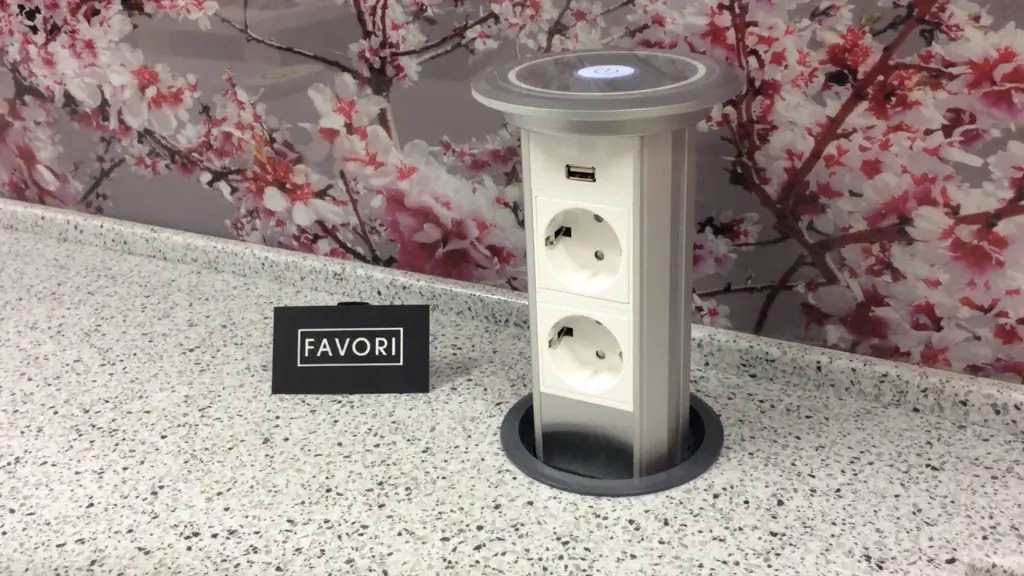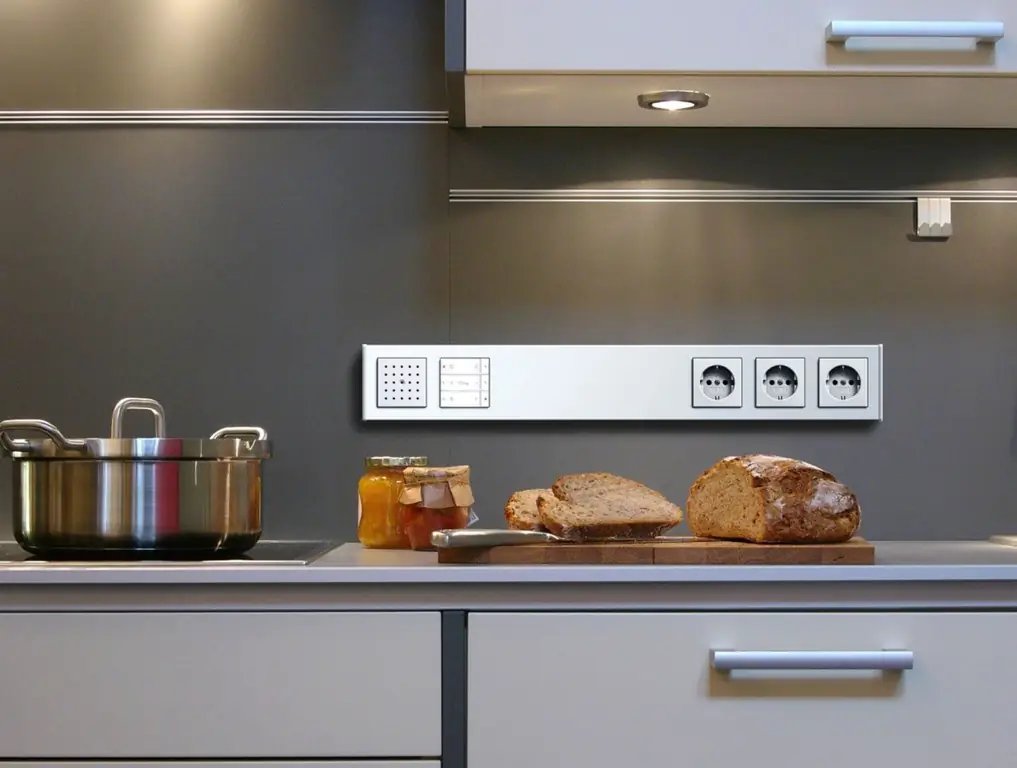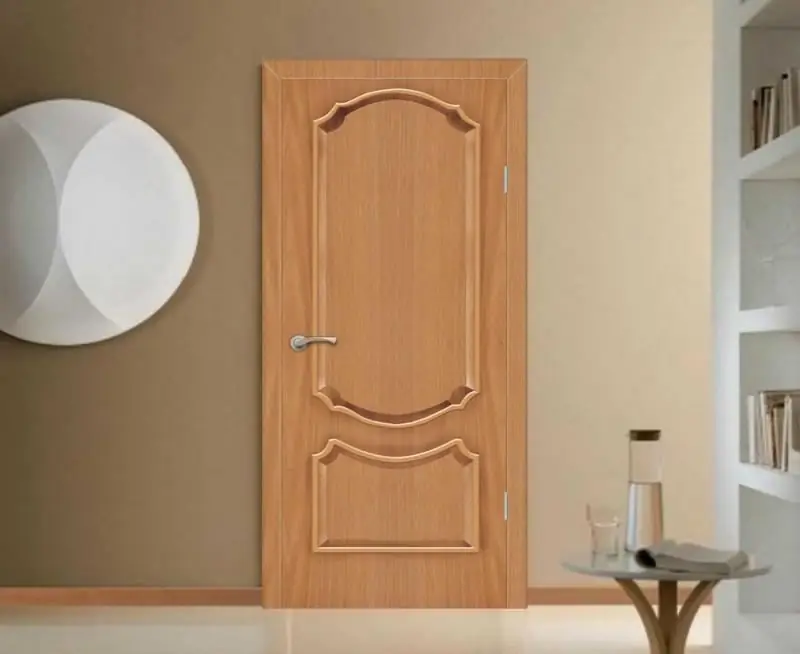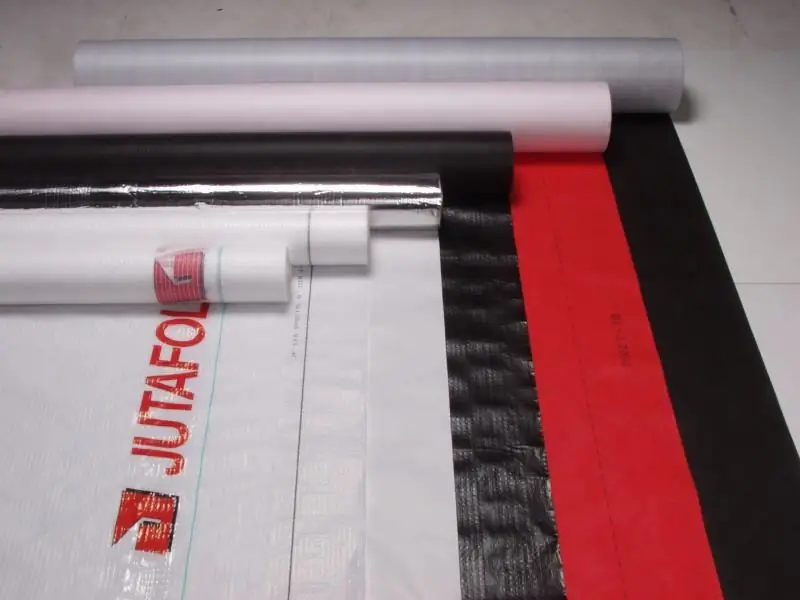
Table of contents:
- Author Bailey Albertson [email protected].
- Public 2023-12-17 12:53.
- Last modified 2025-01-23 12:41.
Retractable sockets built into the countertop: types, characteristic features, installation rules

The electrical outlet does not fit well into the interior and, if it is not used constantly, it makes no sense to keep it in plain sight all the time. Ideally, the electric point should appear "on demand": you need, for example, to turn on the coffee grinder - it appeared, after using the device - it disappeared. This is exactly how the retractable socket blocks that are built into the tabletop or cabinet wall work. Let's consider how to choose and install such a device.
Content
-
1 Recessed retractable sockets: pros and cons
1.1 Table: comparative characteristics of fixed and retractable sockets
- 2 Types of built-in sockets
-
3 Selecting the socket block
- 3.1 Number of modules and allowed power
- 3.2 Manufacturers
- 3.3 Other criteria
-
4 Preparing for installation
-
4.1 Choosing a location
4.1.1 Video: built-in sockets for the kitchen
- 4.2 Preparation of tools and materials
- 4.3 Safety precautions
-
-
5 Installation of a recessed retractable socket
- 5.1 Hole preparation
- 5.2 Securing the block
- 5.3 Connecting to the power line
- 5.4 Video: how to embed a socket into a worktop
- 5.5 Features of connecting rotary socket blocks
- 6 Use and care
Recessed retractable sockets: pros and cons
Like any product, outlet blocks have strengths and weaknesses. Before buying, they must be sensibly evaluated, compared - only then such an acquisition will be justified. The table will help to compare the advantages and disadvantages of built-in retractable socket blocks with conventional sockets.
Table: comparative characteristics of stationary and retractable sockets
| Criterion | Stationary sockets | Recessed retractable sockets |
| Mounting | A time-consuming, dirty and expensive process: a groove is knocked out in the wall for laying a wire and a recess for mounting an outlet. | It is fast, easy and cheap. Dust or shavings are generated in minimal quantities. |
| Appearance | It is striking and this somewhat spoils the design of the room. | When not in use, it is hidden so that the interior remains immaculate. |
| Functionality | They serve as a source of alternating voltage 220 V. There are modular designs that allow using USB connectors, VGA / Audio, HDMI, RJ45 ports. | Same. |
| Quality requirements | Relatively low. It is required that the metal contacts do not overheat under the rated load. | High - due to the presence of moving elements. Low-quality products soon fail: they spontaneously move out, stop functioning due to breakage of contacts in the area of junction of the movable and fixed parts. |
| Possibility of permanent use | There is. The socket is used to connect the refrigerator, microwave oven and other constantly or frequently used devices. | Not intended for permanent use. |
| Tightness | If present, the cover can be hermetically closed. The class of dust and moisture protection IP67 is achieved. | Complete sealing is not possible. The maximum class of dust and moisture protection is IP44. |
Types of built-in sockets
Several types of such devices are produced:
-
Retractable vertical. When removed from the tabletop, the block moves up. To do this, press on the lid, after which it rises slightly. Then, grasping the cover, the unit is moved to the working position, in which it is automatically fixed. The most expensive models move independently due to the operation of the motor at the signal of the touch key. The block is pushed back into the tabletop by pressing the lid, having previously squeezed out the latch. The cover snaps into place.

Vertical pull-out socket block The unit is pulled out by pressing the cover
-
Retractable horizontal. The actions are similar, but when you press the cover, it leans back at an angle to the surface of the tabletop, pulling the block outward. The sockets are located horizontally, so the unit extends to a small height. Some models are difficult to connect to plugs with the cable extending to the side.

Horizontal recessed sockets The socket block protrudes slightly above the tabletop
-
Turning. The unit is tilted 180 ° about the central axis, so that the sockets are at the top and the cover is at the bottom. At the same time, the sockets do not protrude from the tabletop, remaining flush with it.

Rotary recessed sockets With the help of an electric motor, the block with sockets rotates 180 degrees
In some vertical models, the sockets are not lined up, but along the perimeter. They extend slightly, only one outlet wide.

Due to the location of the sockets along the perimeter of the vertical pull-out element, the height of its rise above the table top is reduced
Selecting a socket block
The outlet block is selected according to several criteria.
Number of modules and allowed power
The number of sockets and other connectors is selected according to how many devices are planned to be turned on at the same time. Modular blocks were highly appreciated by users, allowing you to add or remove connectors at your discretion. When selecting power, the powers of all simultaneously switched on devices are summed up and a margin of 50-100% is added.
Manufacturers
Due to the presence of moving elements, the built-in block with sockets is demanding on the quality of workmanship, therefore, when buying, it is especially important to make a choice in favor of one of the well-known, well-proven brands. There are such suppliers among the suppliers of inexpensive products, for example, the Russian company Ecoplast and the Polish GTV.

GTV manufactures recessed sockets in various configurations
The following companies are considered the flagships of the industry:
-
Schulte Elektrotechnik (owner of the Evoline brand, Germany) - the products of this manufacturer are designed according to a modular principle;

Evoline Port Multimedia Professional socket outlet by Schulte Elektrotechnik The Schulte Elektrotechnik vertical retractable socket strip is suitable for connecting multimedia devices
-
Legrand (France) - blocks of this series are notable for their modular design. The user assembles the product himself, setting the required number of power outlets, USB ports and HDMI connectors. Legrand supplies the DLP series built-in retractable socket blocks to Russia. The largest ones have 8 sockets. The unit comes with covers in various colors - from white to gold;

Built-in horizontal socket blocks "Legrand" The cover of the Legrand drawer can be opened by lightly pressing a button and automatically locks open
-
Kondator (Sweden) - the company presented to domestic consumers a series of Smartline PopUp blocks, including 3 models. All blocks are of vertical type, body material - aluminum;

Recessed socket Kondator Condator built-in socket blocks are produced in vertical design
- Simon Connect (Italy), etc.
Other criteria
Also taken into account:
- Dust and moisture protection class. Units with IP22 or 33 class are suitable for rooms with normal relative humidity and dust-free. In dusty or humid rooms (kitchen, bathroom), more expensive products with IP44 protection class are installed. This maximum value for retractable socket blocks is designed to be protected against splashing water and dust with a diameter greater than 1 mm.
- Dimensions. They are selected for ease of use. If, for example, the unit is supposed to be mounted in a kitchen table, it should not interfere with food preparation.
-
Cover color. Selected according to the interior design. Manufacturers complete the built-in socket blocks with sets of replaceable covers in the most popular colors.

Cap color options Various colors of the cover of the socket blocks allow you to choose the option for any interior
-
Design. Some models can be recessed into the worktop without removing the plugs from electrical appliances. They are the most practical.

Recessed fork model The unit can be closed after connecting the appliances, providing a neat appearance of the table
-
Backlight. The backlit unit is easy to spot in the dark. It can also serve as a night light.

Recessed socket with illumination The illuminated socket block can serve as a night light
- Fork type. To connect to a stationary outlet, the blocks are equipped with two types of plugs: one-piece and one-piece. The collapsible plug allows you to extend the cable if the standard length (up to 3 m) is not enough.
Preparing for installation
As part of the preparation, a number of issues are considered - from the choice of location to safety.
Choosing a location
Built-in socket blocks are installed in:
- countertops;
- cabinet walls.

Sockets can be built into the worktop or cabinet walls
Having chosen a place, you need to make sure that the unit in the working position will not interfere with the drawer pulling out or the cabinet opening. It is recommended to install retractable units in a residential building or apartment:
- in the worktop of the kitchen table: a block for 3-5 power outlets is suitable here;
- in the eating area;
- at the resting place of family members: blocks of combined connectors will be appropriate here.

A socket block with connectors for a variety of equipment is suitable for a recreation area
To connect large equipment, it is better to place built-in sockets at a distance of 1 meter from it inside an adjacent cabinet or cabinet. For small household appliances (blender, electric kettle, etc.), the sockets are mounted in the countertop or kitchen apron. Do not install sockets under or above the sink and stove: the minimum distance between them is 60 cm.

Any outlet must be easily accessible in case of malfunction
Video: recessed sockets for the kitchen
Preparation of tools and materials
To install a built-in socket you will need:
- drill;
-
drill bit or "ballerina";

Drill "ballerina" "Ballerinka", unlike a crown, is a universal tool: it allows you to drill holes of any diameter
- wire (if there is no standard wire or its length is not enough).
For cutting countertops made of artificial stone, crowns and "ballerinas" with diamond dusting are used. In the absence of a drill, a jigsaw is used.
Safety engineering
The power supply line to which it will be connected must be de-energized before installing the socket strip. When drilling a hole, especially in artificial stone countertops, glasses protect the eyes from splinters.
Installation of a built-in retractable socket
The block is installed in a specific order.

You can install the socket block yourself
Hole preparation
The hole is made as follows:
- On the countertop at the installation site, draw a circle equal in diameter to the block body.
- A hole is drilled in the center of the circle with a drill of the same diameter as the centering drill of the crown or ballerina.
-
Change the drill in the drill chuck for a crown or "ballerina", insert a center drill into the drilled hole and start cutting a large diameter hole.

Drilling a hole for a socket The hole is drilled with a crown or "ballerina"
- After going through half the thickness of the countertop, select the remaining material on the other side.
In the absence of a "ballerina" and a crown, a different method is used:
- A lot of holes are drilled along the drawn circle with a drill with a diameter of 5 mm, leaving thin piers between them.
- Cut the piers with any suitable tool or break them out with wire cutters.
-
Align the edges of the opening with a grinding attachment fixed in the drill chuck.

Hole machining The edges of the hole must be processed with a grinding attachment.
After making a hole in a wooden countertop, its walls are treated with a water-repellent compound.
Pinning a block
The block is installed like this:
- Insert it into the hole.
-
Fixed from below with screw fasteners provided in the kit.

Fixing the socket block The block is fixed with fasteners
Power line connection
The unit, equipped with a cable with a plug, is simply plugged into a fixed socket. In the absence of a wire, lay a cable from the nearest point of connection to the electrical network to the outlet block. In this case, it is necessary to ensure that the total power of the line, together with the new outlet, does not exceed the maximum permissible.

If the unit is equipped with a wire, it is connected to a fixed socket
If the sockets of the unit are not connected to the terminal block, they are connected with pieces of wires 10-15 cm long. Wires with a cross-section corresponding to the rated load are used.
Video: how to embed a power outlet into a worktop
Features of connecting rotary socket blocks
Installation of a swivel-type unit is possible only with a tabletop thickness of 3 to 5 cm.
Operation and care
When using an outlet block, it is useful to adhere to a few rules:
- You can not turn on the load above the nominal This will cause the contacts to heat up, which in turn will lead to melting of plastic parts or fire.
- Do not pull out / push in the outlet block once again - then it will last longer.
- When connecting the appliance and when removing its plug from the socket of the block, the latter should be held by hand.
With the following symptoms, the unit is repaired or changed:
- heating at rated load;
- sparking;
- the appearance of an unpleasant odor.
This indicates a violation of one of the contacts, as a result of which it sparks and heats up.
Care consists in the following actions:
- From time to time, the body of the unit and the cover are wiped with a damp cloth, having previously disconnected the product.
- If seized, it may be necessary to lubricate the spring mechanism with a small amount of oil.
The outlet block is essentially the same extension cord, only always ready to use and at the same time installed hidden. The interior does not lose its attractiveness, at the same time, the problem of finding a free outlet to turn on electrical appliances is being solved. Using the above tips, the reader will be able to correctly select and install this product.
Recommended:
The Location Of The Sockets In The Kitchen: Placement Height, How Many And Where Needed, Photos, Diagrams

Rules and regulations for the location of outlets in the kitchen. Calculation of the required number of outlets. Drawing up an electrical wiring diagram. Types and installation of sockets
Installation And Connection Of Sockets In The Kitchen - DIY Installation Rules

The layout of the sockets. Marking, drilling holes and installing socket boxes. Wall slitting and wiring. Installing and checking the socket
MDF Doors: Entrance And Interior Doors, Their Varieties With A Description And Characteristics, Advantages And Disadvantages, As Well As Installation And Operation Features

Doors from MDF: features, characteristics, varieties. Making and installing MDF doors with your own hands. Door restoration. Reviews, photos, videos
Polycarbonate For The Roof And Its Types With A Description, Characteristics And Features Of Installation And Operation

Polycarbonate and its types. How to choose polycarbonate for your roof. Features of storage and installation, service life. Consumer reviews
Roof Vapor Barrier And Its Types With Description And Characteristics, Features Of Materials And Installation

Roof vapor barrier, its types, description and characteristics. Features of materials for roof vapor barrier. Installation methods for each of the materials
